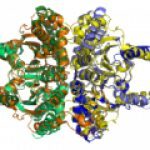Lien vers Pubmed [PMID] – 19396957
FEMS Microbiol. Rev. 2009 May;33(3):539-71
DNA repeats are causes and consequences of genome plasticity. Repeats are created by intrachromosomal recombination or horizontal transfer. They are targeted by recombination processes leading to amplifications, deletions and rearrangements of genetic material. The identification and analysis of repeats in nearly 700 genomes of bacteria and archaea is facilitated by the existence of sequence data and adequate bioinformatic tools. These have revealed the immense diversity of repeats in genomes, from those created by selfish elements to the ones used for protection against selfish elements, from those arising from transient gene amplifications to the ones leading to stable duplications. Experimental works have shown that some repeats do not carry any adaptive value, while others allow functional diversification and increased expression. All repeats carry some potential to disorganize and destabilize genomes. Because recombination and selection for repeats vary between genomes, the number and types of repeats are also quite diverse and in line with ecological variables, such as host-dependent associations or population sizes, and with genetic variables, such as the recombination machinery. From an evolutionary point of view, repeats represent both opportunities and problems. We describe how repeats are created and how they can be found in genomes. We then focus on the functional and genomic consequences of repeats that dictate their fate.


